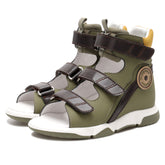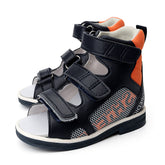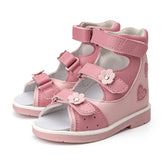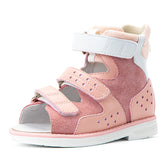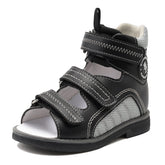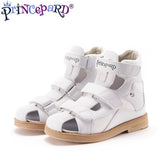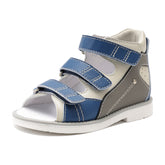Understanding Intoeing Gait in Children: What Parents Should Know
As parents, it’s natural to worry when we notice something unusual about the way our children walk. One common concern is intoeing gait, also known as “pigeon-toed” walking—when a child walks with their feet turned inward instead of pointing straight ahead.
In most cases, intoeing gait is part of normal development and resolves on its own. However, understanding its causes, age-related patterns, and when to seek guidance can give parents peace of mind.
What Is Intoeing Gait?
Intoeing refers to a walking pattern where the toes point inward toward the center line of the body. It can occur in one or both feet and may be more noticeable when a child runs, walks quickly, or becomes tired.
There are three main causes of intoeing gait, depending on the age of the child:
- Metatarsus Adductus – A curve in the front part of the foot (common in infants).
- Internal Tibial Torsion – The shinbone (tibia) is twisted inward (common in toddlers).
- Femoral Anteversion – The thigh bone (femur) is rotated inward (more common in children aged 4–10).
Is Intoeing Gait Harmful?
Most children with intoeing gait do not experience pain or functional problems, and the condition often improves naturally as they grow. According to the American Academy of Orthopaedic Surgeons (AAOS), intoeing typically corrects itself without treatment by the age of 8–10, depending on the underlying cause【¹】.
However, evaluation is recommended if:
- The condition is severe or asymmetrical
- Frequent tripping or falling occurs
- There is pain, limping, or persistent gait issues beyond age 10
In such cases, consulting a pediatric orthopedist can help determine whether intervention is needed【²】.
Should Parents Be Concerned?
It’s completely normal to feel concerned—but rest assured, intoeing is usually just a phase. Regular monitoring and allowing your child to play, run, and explore naturally is often the best "treatment." In fact, limiting physical activity is not recommended unless advised by a doctor.
Role of Footwear in Intoeing Gait
Although shoes do not cause or cure intoeing, appropriate footwear can enhance comfort and improve balance during everyday activities. As noted by Boston Children’s Hospital, well-fitted, supportive shoes are helpful, especially for children who are more physically active or prone to falling【³】.
Shoes with:
- Flexible soles
- Stable heel counters
- Enough room for natural foot movement
...can promote healthier walking patterns.
At PrincePard, we focus on designing children’s shoes that encourage natural foot development while also offering structural support for children who may need it. Our orthopedic shoes are often recommended by parents and pediatricians for kids with gait concerns—not necessarily to correct intoeing, but to support the feet as they grow.
Final Thoughts
Intoeing gait is a common developmental condition in young children and is usually nothing to worry about. Most children grow out of it without needing treatment. The most important thing is to observe, support your child’s natural development, and consult a specialist if you notice persistent or severe issues.
📌 If you’re ever in doubt about your child’s walking pattern, don’t hesitate to talk to a pediatric foot specialist. And when it comes to foot health, always prioritize supportive footwear that promotes healthy movement.
🦶 PrincePard | Specialists in Children's Foot Health
Website: www.princepard.net
Email: support@princepard.net
- American Academy of Orthopaedic Surgeons (AAOS) – “Intoeing in Children”
https://orthoinfo.aaos.org/en/diseases--conditions/intoeing-in-children/ -
Mayo Clinic – “Gait Abnormalities in Children”
https://www.mayoclinic.org/symptoms/walking-abnormality/basics/causes/sym-20050759 - Boston Children’s Hospital – “Pigeon Toes (Intoeing)”
https://www.childrenshospital.org/conditions/pigeon-toes-intoeing
